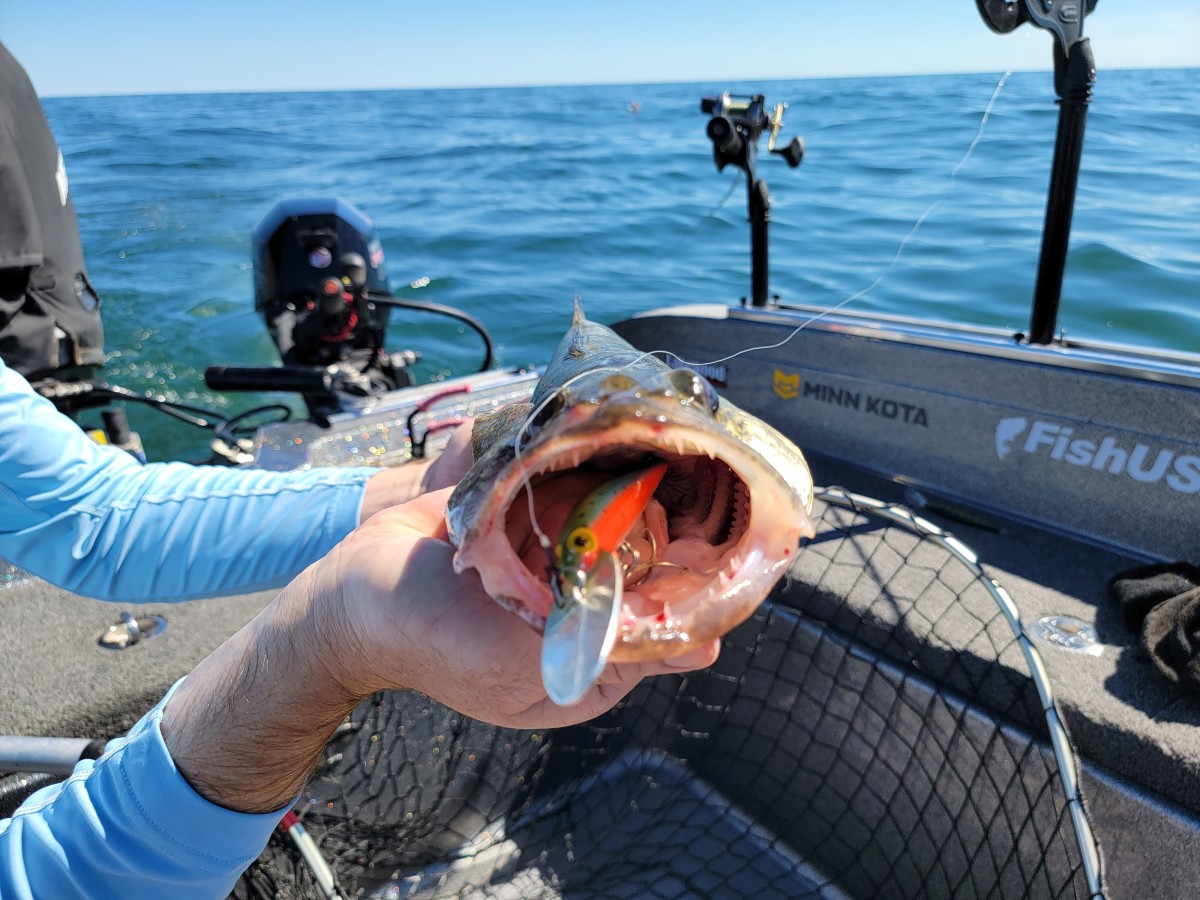
In the heat of summer, the preferred walleye baits often are much different than those used in the cooler water periods. In some cases, it’s as simple as needing to use smaller baits to get bit during the dog days of summer. In other scenarios, you just may need lures that’ll get deeper in the water column. Here are five go-to lures for summer walleyes regardless of where you fish.
If a lure has hung around for more than a generation and still is selling at tackle shops across the nation, there usually is a reason. The Thunderstick family consists of several models that will catch walleyes, but if only one could be chosen by guides and tournament anglers it would easily be the Deep Jr. Thunderstick. The action, rattle, size, diving depth, and extensive color options are what make it so popular.
In the heat of summer, the mad flash or prism colors excel in gin-clear waters, whereas metallics shine in slightly off-colored water. The Jr. Thunderstick can dive fairly deep for its size, but running it on lead core, braided line, or with a snap weight are all effective methods to gain additional depth.
Prime walleye waters from the Western reservoirs all the way to the Great Lakes see a crawler harness bite. The ability to fish them with so many delivery methods and get bites when walleyes are anywhere from lethargic to on fire is what makes them so good. Popular delivery methods include; bottom bouncers, 3-way rigs, snap weights, and beach chain sinkers to name a few.
The VMC Techset features super sharp quality hooks and a float which can help keep it off the bottom when fishing with a bottom bouncer or similar delivery method. When fishing suspended, the floats seem to also be an asset for added color. The Indiana-style blade throws off some vibration and a lot of flash to help attract and elicit strikes from reluctant walleyes.
When I think of summer walleye fishing, I think of fishing fast and covering water—and not many lures do that as well as a trolling spoon. Thin in nature, these spoons flop back and forth creating an irresistible action walleye often can’t resist. The ability to have such a small and thin profile is likely what makes them so attractive to summer walleyes, but it is also what requires them to have a delivery method. Popular choices are Dipsy or Jet Divers, but other options exist.
One of the biggest mistakes anglers make with small trolling spoons is to use too large of terminal tackle. A small #2 VMC snap is all that is needed at the spoon itself. Because these spoons aren’t constantly revolving completely around a swivel is not necessary and can actually kill the spoon's action. A swivel at the top of the leader or on the diving device itself is all you need to eliminate any potential twist.
If we all had a dollar for every walleye that has been caught on a Shad Rap, we likely wouldn’t be reporting for work on Monday morning. The jointed Shad Rap has a few key features that make it even better in the summer months than the original in many cases. The rattles and small jointed body create a unique action in a very small package that seems to just catch fish.
Extremely versatile, they can be cast at structure or trolled with a braided or lead core line to get additional depth. Some lures just seem to catch fish in any body of water and the Jointed Shad Rap is one of those.
Anyone that has ever walleye fished has watched a bite go from wide open to not buying a bite in a matter of minutes. When this happens pulling out some live bait and slowing down is often the best option.
The VMC Spindrift hook is meant to have a portion of a nightcrawler thread up onto it so that it spins in an unusual manner when drifted or trolled very slowly. The unique hook features a barb on the shank to keep the piece of crawler on the shaft and a welded swivel at the attachment point helps avoid line twist. It can easily be rigged on a bottom bouncer, 3-way, or even trolled on a device such as a Dipsy Diver. Sometimes a plain hook line and sinker is the best for finicky fish, especially with an extra little twist in it. The biggest tip is to go slow and don’t use too large of a piece of crawler.



